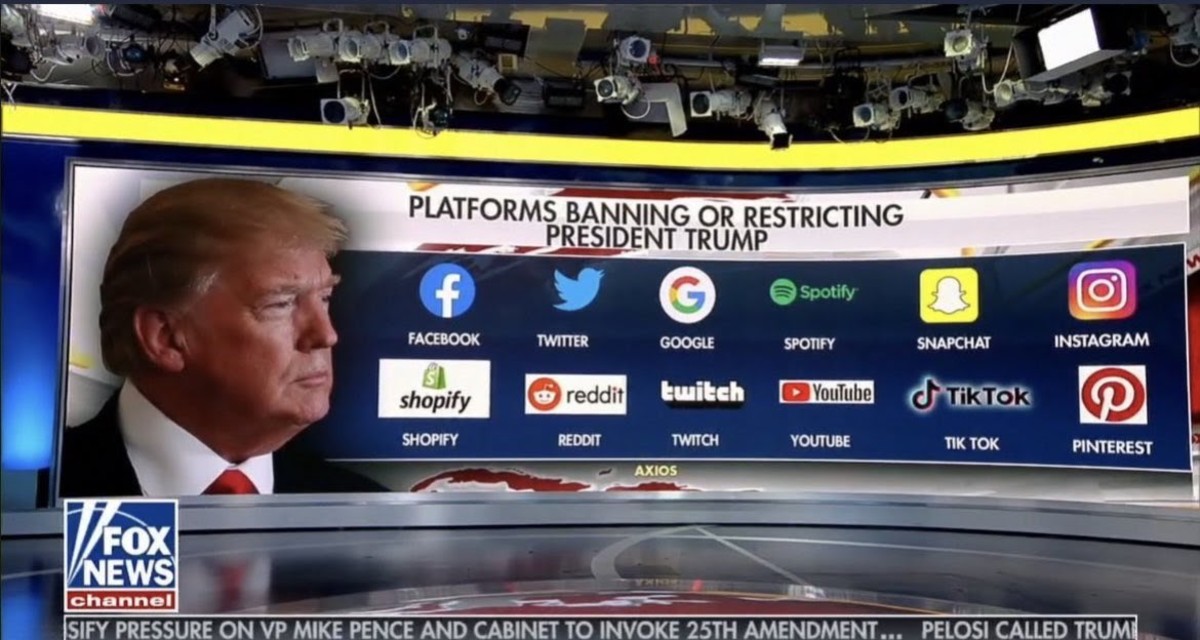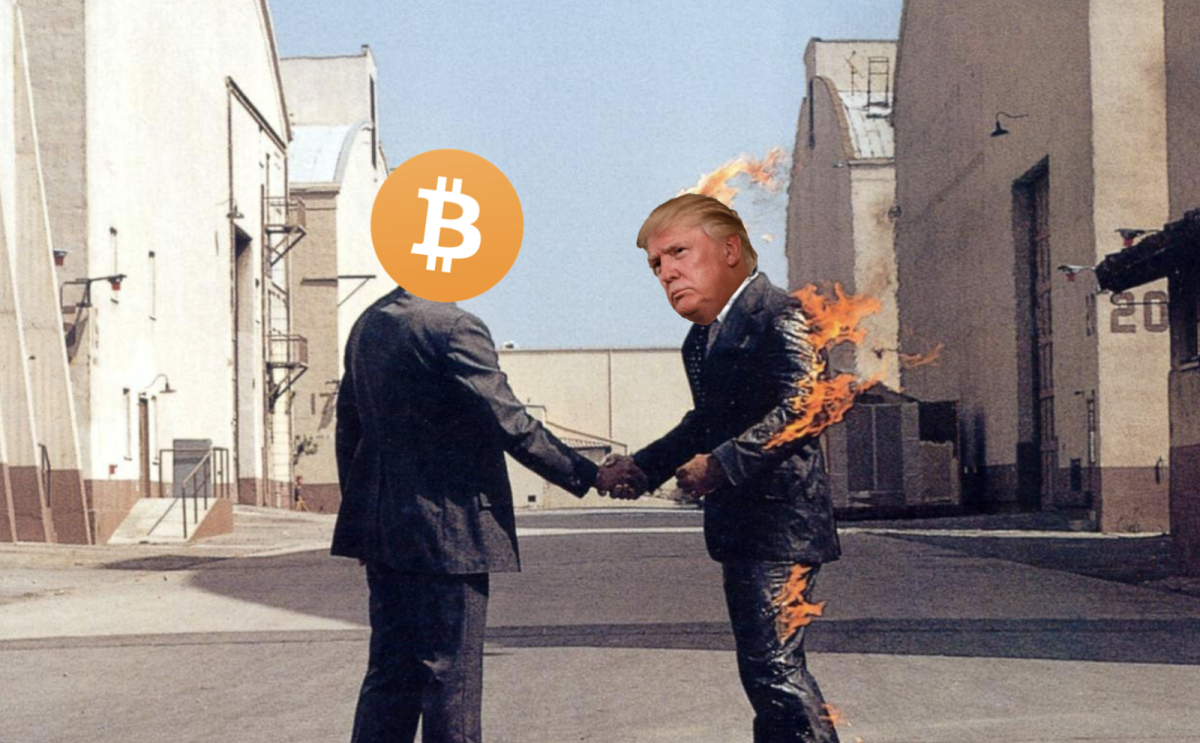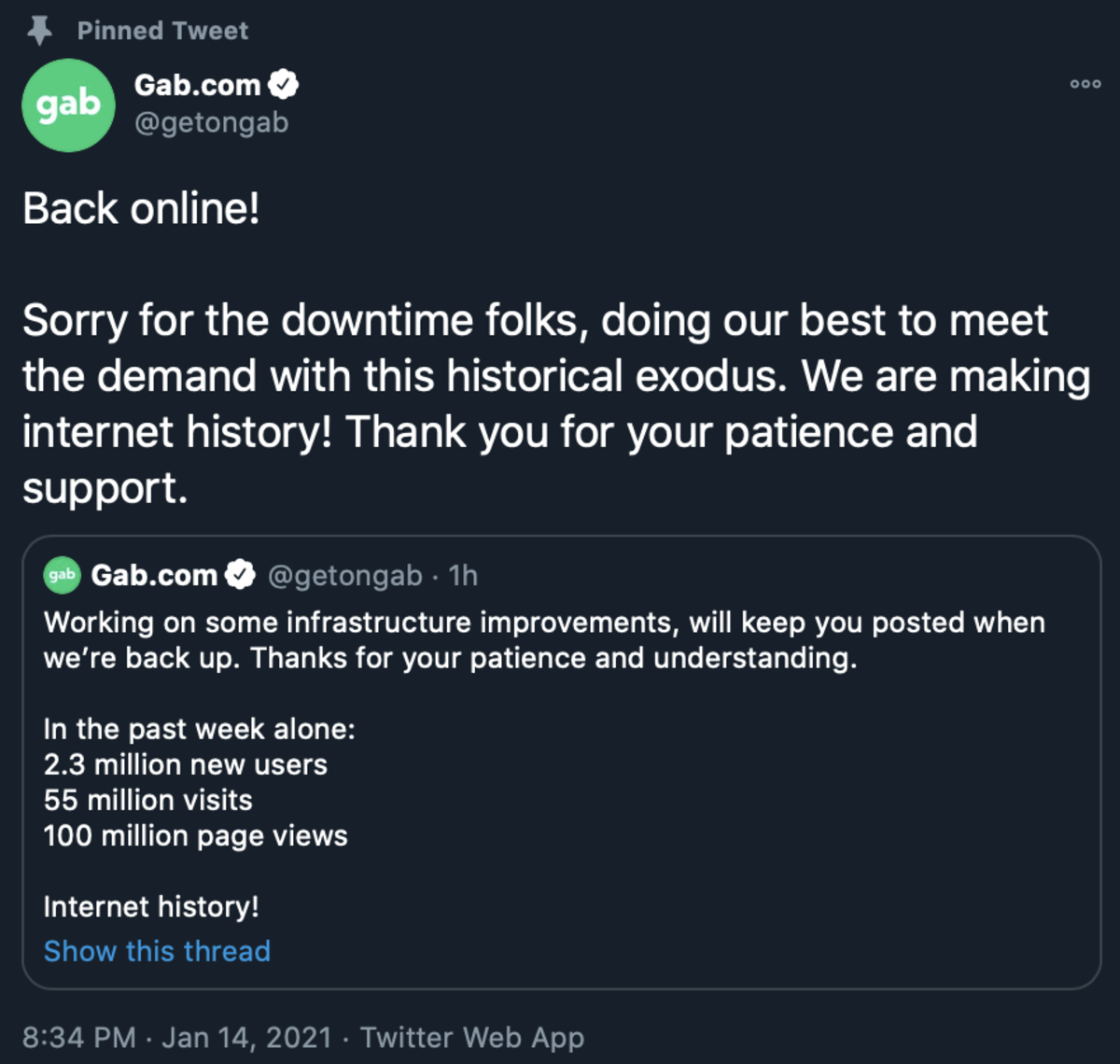
Sources: Twitter and bitcoinhackers.org
Well, it finally happened. With a week or so remaining in Donald Trump’s four-year term in office as the 45th President of the United States of America, Twitter permanently suspended his account.
The President of the United States was also banned from various other social media platforms, including Pinterest of all places. This was truly heartbreaking news, as he will now have to seek out an alternative platform on which to construct his vision boards.
In retrospect, this felt inevitable. Twitter has been flirting with the move for years, with some of the most intense pressure coming from within its own ranks. Previous episodes of social media bans of prominent figures, such as Alex Jones or Milo Yiannopoulos, have sparked brief conversations about social media censorship. These discussions seemingly fade into the collective unconscious with every refresh of the news feed, only to resurface when another name makes the blacklist.
But this one is impossible to ignore.
It involves the sitting President of the United States, one who received nearly 75,000,000 votes in the 2020 presidential election just a couple of months ago. Several platforms acted in a coordinated fashion, like a pride of lions on a hunt in the Serengeti. As people searched for the exit doors of Twitter, the technocrats shut down the escape routes one by one. Apple removed Parler from its app store after demanding that the platform remove content that violated its stated policies. Amazon removed it from its web hosting service. Deutsche Bank, among others, announced that it would not do future business with the president while Signature Bank announced that it would close Trump’s accounts holding about $5.3 million.
Perhaps it’s time orange man considered orange coin.
In Search Of A New Platform
Parler has been forced to temporarily, and perhaps permanently, shut down. Parler CEO, John Matze, is now suing Amazon Web Services, claiming Amazon violated antitrust laws.
Andrew Torba, CEO of Gab, can sympathize with Matze. Gab experienced a similar fate in the not too distant past. Apple and Google have removed Gab from their app stores, Amazon has dropped support for their servers, and PayPal, Stripe and Visa have all blocked payments through their networks. In response, Torba has adapted the software infrastructure of the platform to a fork of Mastodon, a free and open-source social network platform. He began hosting his own servers independently and accepted bitcoin as a form of payment.
Like Parler, Gab was also temporarily inaccessible in the past few days. Unlike Parler, this was not due to censorship, but rather due to server overload. The move toward self-sovereignty paid off.
It is still unclear as to whether Gab will gain enough traction to compete with Twitter in the global marketplace of social networks when the dust settles. What is clear, however, is that people are actively shopping around. And the Bitcoin community is no exception.
As bitcoin has evolved over the years, so has its community’s preferred means of communication; from the Cypherpunks Mailing List to Bitcointalk forums to Reddit and everything in between. It didn’t take long for Bitcoiners to settle in at Twitter and make it their home.
Unlike previous iterations of the Bitcoin community, this one had continual exposure to a global audience. Bitcoin was no longer hidden away in the shadows of niche internet forums. Instead, it was thrown into the pop culture vortex for mainstream consumption. Bitcoin Twitter has expanded its reach over the years, allowing Bitcoiners to connect, spread knowledge to outsiders, rebut the constant mainstream media FUD and dunk on prominent nocoiners like Peter Schiff and Nouriel Roubini.
When Bitcoiners searched for their exit strategy following this most recent crackdown on blacklisted accounts, they found Mastodon. They dusted off an instance by the name of bitcoinhackers.org, which had been established a few years prior as a backup plan in response to various waves of social media censorship. The instance was host to a few thousand active users and many more inactive ones. With each wave of social media censorship, new users joined the community. As time went on, people slowly crawled back to Twitter en masse, leaving the platform relatively barren in comparison.
Last week triggered yet another wave of dissidents. This time, I joined the migrant caravan, and I wasn’t alone. The Bitcoin Mastodon community has grown from just a few thousand users a week ago to over 10,000 users at the time of this writing.
Bitcoin And Mastodon
For those unfamiliar with the platform, here is Mastodon in a nutshell:
Mastodon is a free, open-source, self-hosted social networking service. It allows anyone to host their own server node in the network, often referred to as an instance. These instances are connected as a federated social network, allowing users from different servers to interact.
In Mastodon, “retweets” are “boosts,” “likes” are “favorites” and “tweets” are “toots” (that’s right, “toots”). Toots have a 500 character limit. A local timeline displays toots from everyone on the instance, while a federated timeline displays toots from everyone else — no ads, all in chronological order.

The adjustment was difficult initially, as Twitter muscle memory prevented me from taking an open-minded, unbiased approach. After spending a couple of days off of Twitter, it grew on me.
The local timeline is continuously filled with high signal-to-noise Bitcoin content; provocative questions, quantitative analysis, research articles and memes (naturally). The extra characters allow users to make more nuanced points, better simulating real-world conversations in contrast to the bumper sticker nature of most tweets.
Mastodon’s favorite and boost counters are hidden. While this may seem like an odd design decision at first, it does ultimately reduce the potential for subconscious bias as it allows users to judge posts based on their own initial evaluation rather than the consensus evaluation of others. This feature, combined with posts being displayed in chronological order, allows the community to interact more naturally. Fundamentally, Mastodon serves users as a communication platform, not a content consumption platform. It gives all users a fair chance to be heard.
No platform is perfect, and Mastodon is no exception. There are tradeoffs to every design decision. Though the design allows for a more natural conversation, not being able to sort posts by popularity means potentially missing out on the most engaging posts based on timing alone. The federated timeline can be a bit of a jumbled mess, with thousands of people screaming into the void with no rhyme or reason. In contrast, the local timeline does have the potential to create an echo chamber. Furthermore, the platform can lead to centralization and censorship if not used properly. Although users are flooding into the bitcoinhackers.org instance, they should be encouraged to run their own, akin to running a Bitcoin node, to fully utilize the benefits of a federated system.
Not your instance, not your data.
Bitcoiners would be the first to admit that powerful network effects are an undeniable force to be reckoned with. Their effects compound and become nearly impossible to overcome once they reach a certain threshold. I do not see Twitter disappearing from our lives anytime soon.
I also do not believe that bitcoiners should abandon it entirely. To do so would be to cede the territory of the public square to bad actors. Bitcoiners are notoriously vigilant in their role as Bitcoin’s immune system. An essential part of an effective immune system is the ability to mount a response at a moment’s notice to defend against foreign invaders. Staying dormant is not a viable option for survival.
Mastodon pulls Bitcoiners in to offer respite from the soul-sucking nature of the public square and pushes them out when they are ready to share their thoughts with the rest of the world. It binds us closer together as a community with shared values and a vision for the future.
In essence, it is our first citadel. I hope to see you there.















